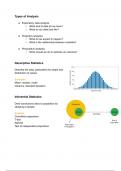Samenvatting
Summary SQE2 Business Law Notes
- Vak
- Instelling
Comprehensive notes for SQE2 Business Law including topics such as: Business and organisational characteristics: sole trader, partnership, LLP, private and unlisted public companies). Finance:funding options: debt and equity, types of security, distribution of profits and gains, financial records...
[Meer zien]








